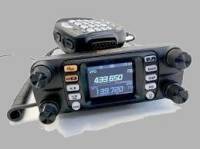|
Click The Radio Image On The Left To Return To Homepage Feel Free To Copy Any Information On The Webpages |
| |
|
Afforable Test Instruments For The Hobbyist
LoadStar SG-4160B Signal Generator Highly Recommended For The Hobbyist And Radio Restoration.
I writing this review for any hobbyist that may be looking for a great reasonably priced signal generator to fit the the beginners pocketbook, as well as those that restore vintage radios that need to be aligned. I own a LoadStar SG-4160B signal generator, I was extremly surprised that the device was extremely frequency stable, you do need a bit of a delicate touch when setting the last digit or two, but you'll get used to it and develop a feel for adjusting the frequency, just a little patience and you'll develop the skill. The price for these signal generators ranges between $150.00 - $180.
Recommended Modification
I made a digital readout modification to my SG4160B signal generator, I added an inexpensive frequency counters to the SG4160B generator, the modification is simple and quick, all that's required is a 200V or higher .01uF decoupling capacitor, a BNC connector, and a small length of miniature shielded coax, about .50 cents or less in total, drilling one hole in the back of the cabinet, a little patience and about 1/2 - 1 hour in time.
If you look around eBay you can generally find used inexpensive frequency counters, or at an amateur radio hamfest. I purchased a used DMI DigiMax D-500 frequency counter and interfaced it with the my SG-4160B, it made a perfect addition to my SG-4160B for aligning vintage radios and amateur radio gear.
I'm including a link to a great YouTube video that specifically addresss not only how to use the SG-4160B for vintage radio restoration alignment, it also shows in detail how to make the digital readout modification to the SG-4160B. It provides two options with regard to the modifying the SG-4160B, I chose the simplest of the two, which one you choose depends on which frequency counter modification you opt to interface with the SG-4160B.
https://www.youtube.com/watch?v=3Mgg8wvyDHw
Bob Krueger, AB7CQ Web Administrator 146.920/146.320 PL 123.0 444.600 / 449.600 PL 100 Repeater IRLP Node: 7515 PL 114.8 ab7cqradio@ebidpal.com |
